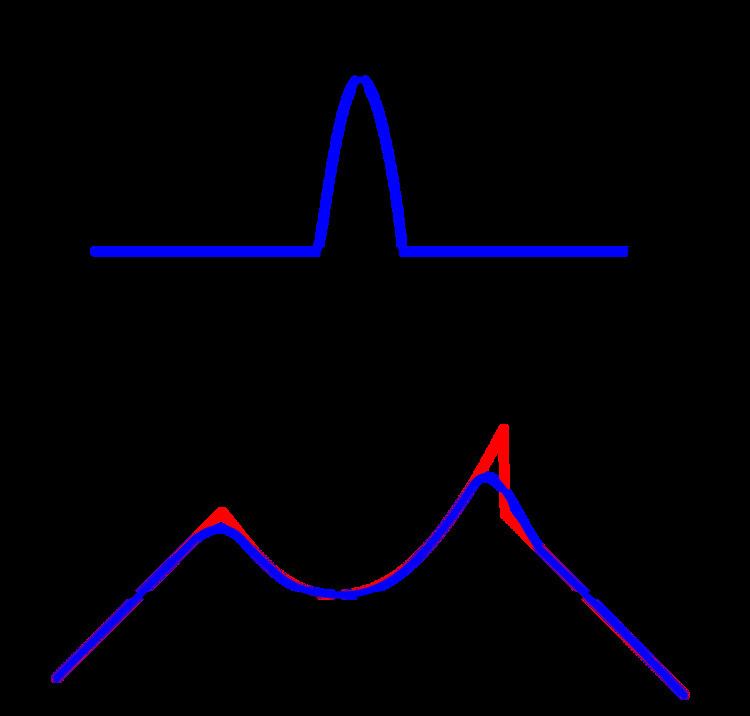 | ||
In mathematics, mollifiers (also known as approximations to the identity) are smooth functions with special properties, used for example in distribution theory to create sequences of smooth functions approximating nonsmooth (generalized) functions, via convolution. Intuitively, given a function which is rather irregular, by convolving it with a mollifier the function gets "mollified", that is, its sharp features are smoothed, while still remaining close to the original nonsmooth (generalized) function. They are also known as Friedrichs mollifiers after Kurt Otto Friedrichs, who introduced them.
Contents
Modern (distribution based) definition
Definition 1. If
where
Notes on Friedrichs' definition
Note 1. When the theory of distributions was still not widely known nor used, property (3) above was formulated by saying that the convolution of the function
Note 2. As briefly pointed out in the "Historical notes" section of this entry, originally, the term "mollifier" identified the following convolution operator:
where
Concrete example
Consider the function
where the numerical constant
Properties
All properties of a mollifier are related to its behaviour under the operation of convolution: we list the following ones, whose proofs can be found in every text on distribution theory.
Smoothing property
For any distribution
where
Approximation of identity
For any distribution
Support of convolution
For any distribution
where
Applications
The basic applications of mollifiers is to prove properties valid for smooth functions also in nonsmooth situations:
Product of distributions
In some theories of generalized functions, mollifiers are used to define the multiplication of distributions: precisely, given two distributions
defines (if it exists) their product in various theories of generalized functions.
"Weak=Strong" theorems
Very informally, mollifiers are used to prove the identity of two different kind of extension of differential operators: the strong extension and the weak extension. The paper (Friedrichs 1944) illustrates this concept quite well: however the high number of technical details needed to show what this really means prevent them from being formally detailed in this short description.
Smooth cutoff functions
By convolution of the characteristic function of the unit ball
which is a smooth function equal to
It is easy to see how this construction can be generalized to obtain a smooth function identical to one on a neighbourhood of a given compact set, and equal to zero in every point whose distance from this set is greater than a given
